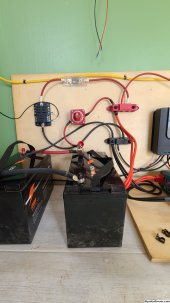ebby_123
New Member
I just install all the components of my solar system and everything seems to be working fine except the BlueSea fuse block. As soon as I switch the system on, all the fuses blow. I've looked everywhere for answers and what I've narrowed it down to it my wire to my fuse block is either too small or all the wiring I've done for my 12v appliances are completely messed up in some way and causing it to short circuit. I've even replaced all the fuses with a higher one and they still blow. What am I missing?...



